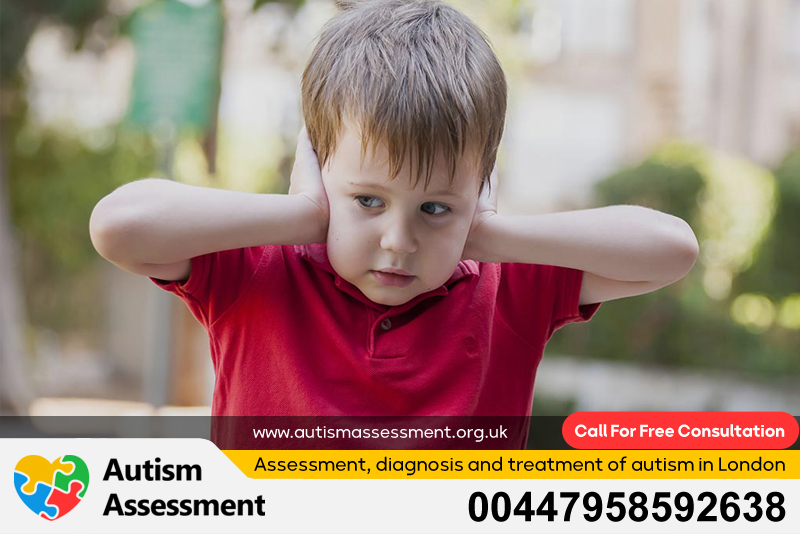Autism Spectrum Disorder (ASD) and Obsessive-Compulsive Disorder (OCD) are two distinct mental health and developmental conditions that can significantly impact an individual’s daily functioning and quality of life. Understanding the characteristics of each disorder is crucial for accurate diagnosis and effective treatment, as the overlap in symptoms can sometimes lead to confusion and misinterpretation. This article explores the features of both autism and OCD, their similarities and differences, and the implications for individuals living with these conditions and their families.
Autism Spectrum Disorder is a neurodevelopmental condition that presents a variety of challenges related to social communication, behavior, and sensory processing. Individuals with autism may have difficulty understanding social cues, engaging in conversations, and forming relationships with others. The spectrum nature of autism indicates that symptoms can range widely in severity; some individuals may require little support, while others may need intensive intervention throughout their lives. Common characteristics of autism include restricted interests, repetitive behaviors, and sensory sensitivities. For example, a person with autism might focus intensely on a specific subject, such as trains or numbers, and may exhibit repetitive movements, such as rocking or hand-flapping.
In contrast, Obsessive-Compulsive Disorder is an anxiety disorder characterized by the presence of obsessions—intrusive, unwanted thoughts or images that cause significant distress—and compulsions, which are repetitive behaviors or mental acts performed to reduce the anxiety associated with those obsessions. Individuals with OCD might engage in rituals such as excessive hand-washing, counting, or checking things repeatedly. These compulsions are often recognized by the individual as irrational, but they provide a temporary relief from the anxiety generated by the obsessions. OCD can vary in severity, and the time-consuming nature of the compulsions can interfere significantly with daily activities, relationships, and overall quality of life.
One of the key challenges in distinguishing between autism and OCD lies in their overlapping symptoms. For instance, individuals with autism may display repetitive behaviors and intense interests that can resemble the compulsive behaviors seen in OCD. A child with autism might become fixated on a specific routine or object, and this intensity can manifest in ways that appear similar to the compulsions of someone with OCD. Additionally, both conditions can involve heightened levels of anxiety, especially in situations that disrupt routines or trigger sensory overload.
However, the motivations behind these behaviors differ significantly between the two disorders. In autism, repetitive behaviors and restricted interests often serve to provide comfort, structure, and predictability in an otherwise overwhelming world. These behaviors may also be a way for individuals to self-soothe when they are feeling anxious or overstimulated. On the other hand, the compulsions associated with OCD are driven by an internal sense of fear or anxiety generated by intrusive thoughts. Individuals with OCD feel compelled to perform certain actions to prevent perceived dangers or alleviate distressing thoughts, even when they recognize that their fears are unfounded.
The diagnostic process for both autism and OCD requires a comprehensive assessment by trained professionals who will consider the individual’s history, behavioral patterns, and the context in which symptoms present. For autism, the evaluation may include standardized tests, parental questionnaires, and observations of the child’s behavior in various settings. For OCD, clinicians often use structured interviews and self-report measures that focus on the presence of obsessions and compulsions, assessing their impact on daily life.
Effective treatment strategies for autism and OCD are tailored to each individual’s unique needs. For individuals with autism, interventions may include Applied Behavior Analysis (ABA), social skills training, and speech therapy to improve communication and social interaction. A focus on creating structured environments that minimize anxiety and provide predictability can also be particularly beneficial. Sensory integration therapy may help individuals manage sensory sensitivities, allowing them to engage more comfortably with their surroundings.
For OCD, treatment typically involves a combination of cognitive-behavioral therapy (CBT) and medication. CBT, particularly a specific form called exposure and response prevention (ERP), is effective in helping individuals confront their fears and reduce compulsive behaviors. ERP involves gradually exposing individuals to their fears while preventing the compulsive responses they typically engage in. Medications, such as selective serotonin reuptake inhibitors (SSRIs), may also be prescribed to help manage symptoms.
Creating a supportive environment for individuals with either autism or OCD requires education and understanding from family, friends, and educators. Support systems play a key role in helping individuals navigate their challenges and encouraging acceptance. Training programs that focus on both conditions can equip caregivers and educators with the tools needed to foster understanding and promote positive interactions. Additionally, teaching coping strategies and providing individualized support can enhance overall quality of life for both individuals and their families.
In conclusion, while Autism Spectrum Disorder and Obsessive-Compulsive Disorder are distinct conditions, their overlapping symptoms can create confusion in diagnosis and treatment. Recognizing the differences in motivations behind behaviors is essential for tailoring effective interventions and support strategies. By fostering awareness and understanding, we can create an environment that empowers individuals with autism or OCD to thrive, enhancing their social interactions, emotional well-being, and overall quality of life. As research and awareness of both conditions continue to grow, the importance of empathy and informed support cannot be overstated, ensuring individuals feel recognized, understood, and supported on their unique journeys.



